Kisspeptin Administration and mRNA Expression in Adult Syrian Hamsters
- PMID: 40643513
- PMCID: PMC12248998
- DOI: 10.3390/cells14130992
Kisspeptin Administration and mRNA Expression in Adult Syrian Hamsters
Abstract
Kisspeptin (Kiss1) and kisspeptin 1 receptor (Kiss1R) are vital in regulating various functions across many species, primarily those relating to reproduction. The kisspeptin system has recently attracted clinical interest as a potential therapeutic treatment for patients with hypoactive sexual desire disorder. This study maps the distribution of Kiss1 and Kiss1R mRNA in the Syrian hamster forebrain using dual-labeled RNAscope. In our study, the distributions of kisspeptin and its receptor were mapped across adult males and females on day 1 or day 2 of their estrous cycle. Conditioned place preference was used to observe the potential effect of kisspeptin on sexual reward in female hamsters. The expression of kisspeptin was greater in females than males, with the estrous cycle having no effect on expression. A comparison of these findings to those in other species revealed that the expression in Syrian hamsters was similar to that reported for other species, demonstrating the conservation of expression. Kisspeptin did not influence sexual reward in females, nor did it affect measures of their primary sexual behavior. These findings provide additional insights into the expression and function of kisspeptin across novel species and add to ongoing research in understanding how kisspeptin may influence sexual desire in animals, including humans.
Keywords: CNS distribution; Syrian hamster; estrous cycle; in situ hybridization; kisspeptin; kisspeptin receptor.
Conflict of interest statement
The authors declare that the research was conducted in the absence of any commercial or financial relationships that could be construed as a potential conflict of interest.
Figures

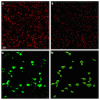



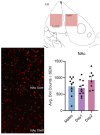
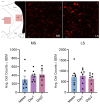

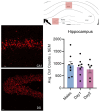



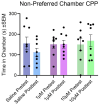
References
-
- Xu Z., Kaga S., Mochiduki A., Tsubomizu J., Adachi S., Sakai T., Inoue K., Adachi A.A. Immunocytochemical localization of kisspeptin neurons in the rat forebrain with special reference to sexual dimorphism and interaction with GnRH neurons. Endocr. J. 2012;59:161–171. doi: 10.1507/endocrj.EJ11-0193. - DOI - PubMed
-
- Adekunbi D.A., Li X.F., Lass G., Shetty K., Adegoke O.A., Yeo S.H., Colledge W.H., Lightman S.L., O’Byrne K.T. Kisspeptin neurones in the posterodorsal medial amygdala modulate sexual partner preference and anxiety in male mice. J. Neuroendocrinol. 2018;30:e12572. doi: 10.1111/jne.12572. - DOI - PMC - PubMed
MeSH terms
Substances
Grants and funding
LinkOut - more resources
Full Text Sources

